THE ERA OF SHAPED RIDING SKIRTS
1875 to 1915
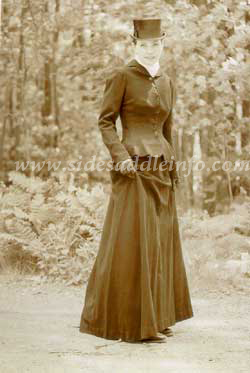
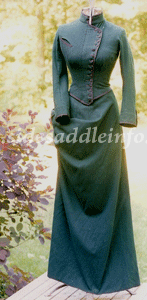
1870's/1880's The high mandarin collar, multi- button front, and stylized coat-tail, seen in French fashions as early as the 1870’s, were more typical of American habits in the 1880’s. This habit, in a very light weight bottle green wool, has 11 seams and two stays in the basque, or snugly fitted bodice.Straight legged riding trousers of matching fabric were standard under the double-knee-pocket riding skirt of the period.
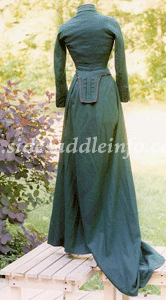
1880/1910 The shaped riding skirt was at first considered too complicated to be made at home, but by the late 1800’s fashion magazines included patterns and directions as well as illustrations. While women who rode did so in a sidesaddle, not all needed or could afford a tailored habit. This riding skirt in denim, a sturdy fabric that had been used in work clothes for over 100 years, was a rural woman’s practical alternative.
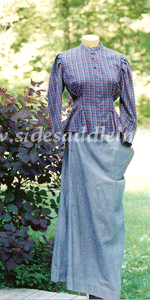
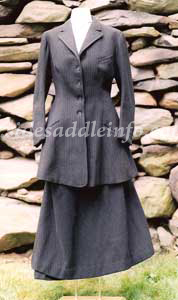
1910-1915 A heavy melton wool habit by Deggerberg of Philadelphia, PA, features the long, princess style coat popular in the Edwardian era. Its shaped riding skirt, following a movement that began around 1885, has evolved into a single-knee-pocket style known as the half apron skirt. When buttoned up for walking, its “new” safety feature--a cut out area under the right leg intended to prevent the skirt from catching on pommels--is concealed from prying eyes.
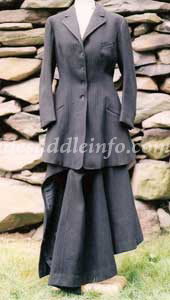

©2000-2009 N.E.A. Sidesaddle Assoc. All rights reserved. No reproduction permitted.